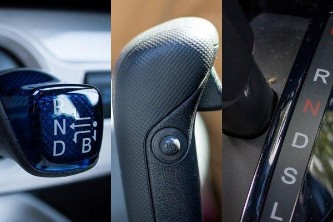fd intake manifold
fd intake manifold Related Articles

Yet another Honda Civic Type R sold for nearly half a million Ringgit. What gives?
We think the 8th-gen Civic FD is the best of the bunch.
This Blitz-tuned Toyota Raize is how you should modify your Perodua D55L
from the “Power Con”, Blitz has also fitted the Raize demo car with an open pod-style air intake
Volkswagen Adds New Aftersales Service - Walnut Blasting Decarbonizer
Over time, carbon deposits will accumulate into black soot that hardens around the intake valves, resulting
Spyshot: New 2020 Perodua Bezza facelift seen, launch imminent?
has been completely redesigned, featuring a pair of slimmer headlights and a more prominent lower air intake
2020 Proton X50 - Confused with the features names? We explain the ABCs
In this setup, fuel is injected into the intake port to be mixed with air before entering the combustion
Tiny turbo engines: good or bad?
A: A turbocharger is a device that forces more compressed air into the intake port of the engine.Q: How
What on earth is VW’s Budack Cycle? It’s certainly not child’s play
A: The intake valve closes before the piston reaches BDC (Bottom Dead Centre) in the intake stroke, effectively
Watch YS Khong tell you why Mazda is so singularly brilliant
engine no one else would go near.To this day, I have an undying (and unrequited, for now) love for the FD
Honda Civic FD, the greatest Civic ever?
amongst the hits, one generation stands out from the rest, which is the 8th generation model, codenamed FD
Should you clean your engine bay?
Unless you have leaves or anything else blocking the radiator or jamming your intake, you don’t
Honda City & Civic to be discontinued in Japan but not Malaysia, why?
eventual demise from the Japanese market isn’t new – Honda discontinued the Civic during the FD-generation
2019 Proton Persona , pricing from RM 42,600
RM49,600Persona Premium 1.6L CVT - RM 54,600Exterior, the new car has a new "Ethereal Bow" intake
HKS can now update the R32 Skyline GT-R's RB26 with modern tech, 600 PS and 5 L/100km?
highlighted in the RB26 Advanced Heritage are the: Pre-chamber combustion Vertical turbochargers Dual plenum intake
Drive68 body kit fitted to the 2020 Honda City
makeover with the Drive68 body kit.Up front, the front bumper extension gives off an aggressive visual intake
New 2020 Toyota GR Supra for Malaysia - up RM 21k, 48 PS more and improved chassis
to 4,500 rpm previously.The engineers increased the power output by using a new dual-branch exhaust manifold
Does the all-new 2019 Subaru Forester 2.0L feel underpowered?
The cylinder head, intake and exhaust manifold has also been strengthened to accommodate the new set
New 2021 Hyundai Elantra N Line sport sedan teased
fascia by a cascading grille specific to the N Line cars.The sedan also sports a motorsport-inspired air intake
RADICAL CrossBlue Coupe: Next-Gen Concept of Volkswagen Tiguan
The lower intake under the front face of the new model will be designed in segmentation, which is still
Ferrari is making different kind of intake valves to battle Covid-19
FD Mazda RX-7 tries to show who the real Keisuke is, spins instead
In a video that recently made its rounds on the interweb, a FD Mazda RX-7 is seen gunning it, being chased
fd intake manifold Post Review
I liked a @YouTube video https://t.co/Cw08B8HNU4 PORTING THE FD RX-7'S INTAKE MANIFOLD!!!!! (DIY)
cut off all of the emissions parts from an FD rx7 intake manifold, there is now aluminum in my hair and everywhere...
Im really digging this HGK 2JZ intake manifold on Faruk's FD Pro1 car. Give him a follow to keep… https://t.co/ZfhkaA9i6I
FC to FD upper Intake Manifold w/Throttle body RisingRPM: Here is a link to how you too can have an FD upper int... http://t.co/ldcV2E8P
Check out Engine Mount Turbo Intercooler Intake Manifold Kit For Mazda RX8 RX7 FD 13B #RotaryWorks https://t.co/W5eOhARSAE via @eBay
FD Rx-7 intake manifold ready for installation! http://t.co/dt7jXnuevD
Mercedes CLK350 E350 ML450 SLK280 Engine Intake Manifold Genuine 2721402401 FD https://t.co/QJMsXN4odZ
[Wanted To Buy] FD upper intake mani and TB: Hey guys looking for a FD upper intake manifold and throttle body. ... http://t.co/BPgwDELo
Fel-Pro 1247 Intake Manifold Set: Fel-Pro Gaskets 1247 61-71 Fd 352-428 Med Rise - In http://t.co/QwlIVPqF
SKUNK2, Intake Manifold – Civic FD http://t.co/GYgWKaWfMJ
fd intake manifold Q&A Review
How do you test springgate wastegate pressure?
I am not familiar with your specific wastegate. if it works in the common fashion, it has a line in that communicates with the pressure from your turbo compressor housing or intake manifold runners through a boost controller solenoid /or not/ through a BC if you don't run one... the executive summary: if you were able to pump the wastegate actuator up to 20 psi and the spring didn't move (opening the valve) your spring is way too stiff. many people haven't thought out how springs work: a ten pound linear rate spring for example. 10 pounds of force will move the spring 1 inch. 5 pounds force will move it one half inch. ( that's why a 10 pound spring will start to open at less than ten pounds.) 20 pounds will depress a 10 pound spring two inches i don't know how Blitz/Greddy/HKS rate their wastegate springs. is a true 10 pound per inch spring considered a "10 pound spring," or is it a spring that is sufficiently stiff as to allow the average motor to make 10 psi intake pressure? i will tell you that i recently checked a few wastegate actuators. i found that they started to open at 9 psi on my the pressure gauge on my Mitey Vac. my guess is that's about what you are looking for as you can run a controlled 9 to 20 something psi with such a spring and a good boost controller. there is another powerful factor effecting wastegate dynamics. exhaust pressure: just like there is pressure from the compressor in the intake runners of you motor, say 10 psi... there is pressure out the exhaust side of the motor. primarily from the exhaust port to the turbo turbine. it is this pressure that drives the turbo. depending (primarily) on the sizing of your turbine housing and turbine wheel the exhaust pressure may be between 1 and 2X of your intake pressure. you could easily be making 10 psi at your intake and 20 psi out the exhaust port. for this reason, if your feel your wastegate open and you look at your boost gauge and see you are making 10 psi it does not mean you have a 10 pound spring. (of course you could consider it to be a 10 pound spring if you wished to think pragmatically.) my advice is that if your spring didn't move at 10 psi pressure on the gauge call a good turbo shop and ask them for advice as to a spring rate for you. you will probably end up w something in the 9/10 range... which BTW, is what is on the OEM fd. good luck,
Why was the rotary engine [Mazda] dropped/not taken up by other manufacturers?
As a former land speed racer of a 3rd Gen RX-7, I must say, kindly, and in gest, “shut yo mouth!” The NSU Wankel “rotary" engine, for its time, was immensely successful. It had its quirks, that's for sure. I blew three motors on the dyno that Roger Mandeville had built for me! I studied under Rick Ingman, who was Jim Downing's engineer here in Atlanta. I had many many talks with Rick. I couldn't afford his building 13B blocks for me to experiment with! But I did learn a lot from him. Let's take a look… In the rotary engine's defense: First off, the life of the rotary dngine began within the time we've had FM radio, color TV, and less than 10 years before Neil Armstrong set foot on the Moon. The reciprocating internal combustion engine has been around since before 1900! You think those first engines were models of perfection? Hardly. But it is within the memory of a 60 year-old guy like me to remember when the RX-2's and RX-3's came out, only to hear of their engines burning oil, mostly due to the spring-loaded side seals scraping along the housings. Mazda learned to coat the side housings with a process (geez, I think it was called “nitride deposit" of chrome onto the steel, basically emulating how, when you make stainless steel, the chrome percolates to the surface, creating a seal against whatever oxidizing elements the metal may encounter. So, it was a learning process for Mazda to get this right with the next iteration, the RX-4, which I believe came out in 1976. IF PROPERLY COOLED, AND WITH A FULL OIL PAN, the rotary would run like hell! Now, what I'm about to tell you, most people do not know. But, 25 to 30 percent of a rotary engine's cooling actually came from the oils splash inside the innards of the engine. That, my friends, came from Rick himself, in all the studies he had done over the years. As one factory mechanic has mentioned, it is not uncommon for the average new car buyer not to look under the hood of their new car, and simply check the oil and water level. FOR CRYIN' OUT LOUD!! Now I sound like the actor who played Ken Miles in Ford vs. Ferrari!! It's a freaking race engine, dying to be opened up---regularly and often. Which means you, the owner, have to LOVE your car, and treat her better than your girlfriend. Because your girlfriend may forgive you, but your 12A or 13B WON'T!! Quite simply, you had to do four things A. Use Castrol 20-50--NO SYNTHETICS! B. Keep the oil level FULL,, C. USE ONLY A MAZDA OIL FILTER--PERIOD PERIOD PERIOD D. Keep the coolant full.. I GOT 319,000 MILES with my 1982 RX-7 before I made one of the worst mistakes of my life--and sold it. If I could only find her and bring her back home!! That wss no aberration, my friend. Many folks who knew how to have fun with their RX-7's got similar mileage out of their 12A motors. You simply had to watch the oil and coolant. The car would do the rest. Here were the weaknesses of the Wankel rotary.. Heat dissipation, especially with the rear rotor housing. If you look at a Wankel inside a typical RX-7 engine bay, you see the outer shell of the engine's housings. Just a few millimeters underneath are a series of water jackets, where coolant begins its trip through the entire engine, from the front to the back. I remember trying to find a way to get cooler coolant to that back rotor, which was the one that had most of the heat problems. The problem was that on the other side of the water jacket was just another few millimeters of metal. Then the “swept volume” chamber, where the air-fuel mix was burning. As Rick once said to me, “When you think of the temperature regimes of no more than 240°F on one side, and nearly 1500°F on the other, and less than 6 millimeters of metal to absorb that kind of heat, then get rid of it before warping something, we're talking about a very fine line between success and failure.” Of course, Jim and I were pushing rotary engines beyond 10k rpms. In fact, Jim's team was pushing 12,000+ on the straights. I never pushed passed 10k, because the runway I raced at was 10,000 feet long, the trip lights were at 1 mile, and frankly, beyond 170 MPH just got freaky feeling in my car…I don't think, aerodynamically speaking, my 3rd gen was safe beyond that. I've got a video clip of the Racing Beat attempt at Bonneville, in a thoroughly modified FD, and you can see where one of the front suspension springs collapsed further under the frontal downforce at the nose of the car. That front-right side of the car lost its “ground effects" vacuum, lost traction on the salt and the front-left kept grabbing. It was like some mysterious cowboy had lasso'd that wheel, yanked it hard, sending the car into a lateral spin. To which air flowing over the top of the sideways car at 200MPH lifted the car like an airfoil (the Bernouli effect), sending the car into the air, what, 15 feet, then tumbling and finally sliding on its roof at 175 MPH. And Racing Beat had installed a ground effects pan onto the bottom of the chasis! My car was rock stock, with the exception of the roll cage, the flywheel housing blanket and the Halon system I'd just installed! I needed to install an external battery switch, and THEN a drag chute if I were to attempt 200 MPH. But the rotary is a solid and reliable engine. Especially if you keep your revs low. It just won't die. Metallurgy. Wow…did we have lots of talks about this! Not what you think though….Most people, right here, will go on about the crap sandwich in of iron end and center housings to aluminum rotor housings. Noah. That goes back to keeping the coolant below 245°F. No, it's what happened in the racing world, with piston engines. You see, in a reciprocating engine, the piston rod, and the wrist pin both are geometrically designed to account for some flex or stretch and rebound. We're talking only a week tiny amount though. Any more, and POOOFFFF! Blown motor. When titanium became more available, the first place it went was in piston rods! Then in the valve trains. Before you know it, now piston engines were revving like rotaries! 13k RPM's is nothing for piston race engines. And the technology in metallurgy transferred down to “consumer" automobiles, providing greater reliability. AND forgiveness in “consumer" neglect. Physics of flame propagation and burn rate. Back to my 93 FD…. I purchased a T-78 turbo, to replace the little Hitchi twin turbos that came with the car. Those Hitachis were basically motorcycle turbos, configured to operate as a “twin-sequential" setup. It took 76 vacuum hose connections to make that darn thing work! But, the torque band was fairly smooth up the dial. Thing is, the poor turbos would cook any oil on their bearings! After running them pretty good a few times--THEN SHUTTING OFF THE MOTOR, like most people would do--and guess what? The turbos would seize up!! Yep. What a piece of crap. People installed “turbo timers", always in vain, trying to find a way to keep oil flowing over the bearings to cool them down. BUT THEY WOULD NEVER, E-V-E-R COOL DOWN!! Why? Oh why? Sure, it would've helped if there had been a way to run coolant to the turbo housing. But I doubt that would've helped much. And here's why: The air-fuel mixture was STILL BURNING AS IT LEFT THE EXHAUST PORT!! Basically, a turbo on a rotary engine was really a gas turbine engine, in and of itself. The air-fuel mix was still expanding inside the turbo housing. So really, it didn't matter how much cooling effort you put into saving your turbos, the turbo housing was taking on all that fresh heat from the very last ignition. Rick snd Roger both found ways to cool a single turbo in their race cars. Znd with my T-78, the exhaust manifold to the turbo gave enough distance from the brunt of the flame front. So I was able to run some serious boost---except that I kept going lean, right around 7k rpm's!! I'm tellin- ya, three motors, installed, tuned on the computer and almost ready to go to Bonneville! I had invented what I call a “freon-to-air intracooler". I used a huge, dragster aur-to-water intercooler for this mad idea. And it worked. At 7000 rpm's the air charge in the intake was showing -10°C. With the extra large reservoir of freon, I could keep the air charge that cold for 40 seconds. It was awesome! But I couldn't get the Porsche Bosch injectors to actuate fast enough. And I don't know why. Charlie and I, and the rest of his crew would just look down, into the engine bay at the engine, so pristine looking, and the awesome smell of brand-new gaskets just getting seated-in, knowing we just killed yet another $13,000 engine! Argh! So, in the final analysis, Wankel rotary engines were not a failure--not by any means. Ask the Mazda engineering crew. Rick had built a monster 26B 4-rotor for the 787 entry for Lemans. Geedz, what year was that….’02? Anyway, Rick had warned the Mazda folks that ghe transmission shift was way too thin for the amount of torque that his motor would produce. But they didn't listen. Geez, we were so early in the race…and blowing the doors off of EVERYBODY. I mean, we were way ahead. And then, klunk, snap. The transmission gave out. So don't tell me the rotary was a failed design. IT WAS A FIRE BREATHING BEAST. And everybody knew it too!
 HOME
HOME 


